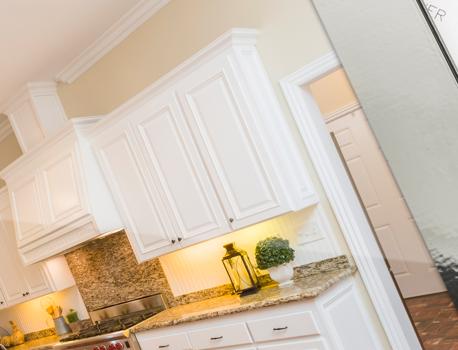6 Ways to Finance Your Dream Home Improvement Project

If youre hatching plans for home improvements, get ready for sticker shock: On average, a kitchen upgrade costs nearly 20,000, and a bathroom remodel can easily set you back more than 9,000, according to HomeAdvisor.com.
But a renovation that adds value to your property can be worth every penny. Youll just need to figure out how to pay for it. Here are six ways to come up with the money.
1. Refinance your mortgage
If you financed your home a few years ago and your interest rate is higher than current market rates, a mortgage refinance could lower it -- and your monthly payments. And that could free up cash for your dream renovation.
You might also consider a cash-out refinance to tap some of your homes equity. Lenders will generally let you borrow enough to pay off your current mortgage and take out more cash, up to 80% your homes value.
Think carefully before you embark on this type of refinance, though: Youll be using your home as collateral for a bigger loan, and youll be financing short-term costs with long-term debt, which adds interest and other fees to the price of the renovations. In most cases, a cash-out refinance is only appropriate if youre improving your home in ways that will increase its value.
2. Obtain a home equity line of credit
A HELOC is another way to borrow against the the value of your home, but unlike a refinance, it doesnt pay off the original mortgage. Instead, you get a line of credit -- usually up to 80% of your homes value, minus the amount of your home loan.
HELOCs come with a draw period and repayment period. During the draw period, which often lasts about 10 years, you can spend the money in your credit line. Your monthly payments would cover mostly the interest and a little bit of the principal on any outstanding balance. During the repayment period, which typically lasts around 15 years, your monthly payments would probably be higher because theyd include more principal.
Interest paid on both HELOCs and home mortgages is generally tax deductible. But with HELOCs, the deduction is limited to 100,000.
3. Take out a second home loan
Sometimes called a home equity loan, a second home loan is another way to tap your equity without refinancing. Instead of getting a line of credit, as you would with a HELOC, youd receive a lump sum of money. A second mortgage could make sense if you dont want to refinance your first mortgage -- if it has a very low interest rate, for example. But the interest rate would probably be higher with a second mortgage than with a refinance. Interest payments would be tax deductible.
4. Apply for a personal loan
Personal loans dont offer the tax advantages of a refinance or HELOC, but theyre an alternative to using your homes equity for financing and putting your home up as collateral. In fact, you may not have to put up any assets for collateral, but youll generally need good or excellent credit to qualify.
Interest rates are usually higher with personal loans than with home equity financing. Theres also a shorter timeframe to repay the money, about five to seven years. The shorter window could mean your monthly payments are larger than theyd be with other options, but youd end up paying less interest overall.
If you have good credit but not much equity in your home, or youd prefer a shorter repayment period, a personal loan could be a good choice.
5. Use a credit card
Plastic allows you to make purchases if you dont have the cash up front, and certain credit cards give rewards for every dollar you spend. But youll want to make sure you can pay off your balance in full each month, because credit cards generally come with higher interest rates than other types of financing.
6. Save up and pay cash
It may require time and patience, but saving your money until youre able to pay outright for a renovation eliminates finance charges. Paying with cash can also make it easier to stay within your budget.
Margarette Burnette is a staff writer at NerdWallet, a personal finance website.
This article originally appeared on NerdWallet.


